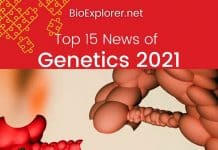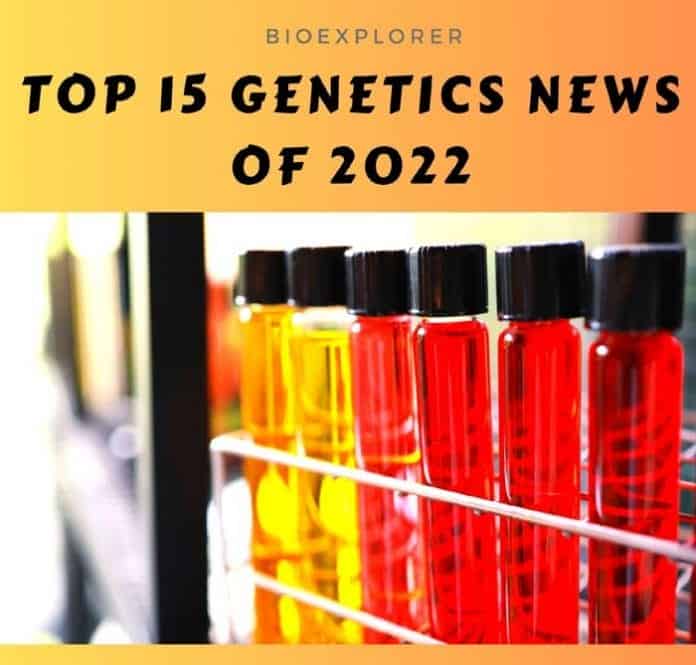
The top Genetics discoveries of 2021 were remarkable, emphasizing genetic traits and the basis of various illnesses, including cancer and lifestyle diseases. But the year 2022 gave us an array of promising news, starting with genetic manipulation to cure cancer neurodegenerative diseases, a remedy to mitigate the problem of infertility and improve quality of life.
Top Genetics News of 2022
1. Researchers provided fresh insight into the genetic alterations that activate cancer genes (USA, Dec 2022)

Genetic changes can result in cancer. Oncogenes are changed genes that potentially transform normal cells into cancer cells. Researchers have focused on specific methods that activate oncogenes. The results demonstrate that the impact of such mutations varies based on the distance between a certain gene and the regulatory sequences that control it, as well as the activity level of those regulatory sequences.
- Most genetic mutations have little effect on cancer, and oncogene activation is only sometimes caused by molecular occurrences.
- To understand why all these alterations take place in some, but not all, situations, this research attempts to comprehend how genomes are arranged in 3D space.
- The group also looks for elements that might identify when and where these incidents occur. A gene is similar to a light, and the things that control it are similar to the switches.
- Numerous switches may turn a certain gene “on” due to structural variations in cancer genomes. Certain genes seemed to go berserk when placed in contexts with unique regulatory sequences. In contrast, others had no effect at all.
- The sort of sequence that was used seemed to have a significant influence on whether the cell developed into a cancer cell.
This research improves our ability to identify and predict the genetic alterations in cancer genomes responsible for the disease. The next step is to investigate whether the genome contains any other components that influence the activating of oncogenes.
2. Scientists apply a novel technique to complete the genetic data (Germany, Jan 2022)

Modern plant breeding is currently impossible without the utilization of genetic data. Although DNA sequencing is now much more affordable, gathering genetic data still makes up a significant portion of the expenditures associated with breeding animals and plants. One way to lower these expenses is to merely sequence a tiny, randomly chosen portion of the genome and then fill in the existing gaps using statistical and mathematical methods.
- To do this, a research team created a fresh methodological strategy. The method’s main concept is the identification of “haplotype blocks“.
- Due to heredity, various plants have longer portions of the genome that are quite similar. The remaining data might be assembled using this mosaic framework.
- The quality of the sequences produced by this new technique is similar to extracting a hundred times more data from the DNA strand.
- Another benefit is that the approach enables us to recognize structural variations that were previously practically useless for breeding purposes, in addition to variances in individual Nucleotides within the DNA strand.
The technique, however, is currently only effective for inbred lines of plants in plant breeding. A follow-up study to apply the technique to creatures with a typical double set of chromosomes is already planned. This would imply that this novel technique may benefit most animals’ DNA sequencing, including humans.
3. Researchers discover fresh variations in sperm cells (USA, Nov 2022)

According to a group of experts, the behavior of sperm cells is partly influenced by their unique DNA composition rather than just by the genetics of males. This work is the first to show how sperm cell swimming behavior can be directly impacted by genetic variations.
- It contrasted the sperm cells of fish with normal sperm production and fish with intentionally altered sperm production.
- This enabled the researchers to spot physical and behavioral traits that might impact a sperm’s ability to fertilize an egg.
- The findings revealed no distinction in flagellar length between normal and mutant samples.
- The velocity, or moving speed, of the altered samples was more variable than that of the control samples.
- The mutant samples frequently traveled at a lower or faster speed than healthy ones. Generally, both sperm cell types resemble one another, yet they behave very differently at critical moments.
The findings provide insight into the process of reproduction in new ways. This work implies that the construction and use of screens depending on sperm behavior can enhance the quality of the DNA they carry and may provide deeper insight into the effects of aberrant sperm cells on kids, including birth abnormalities.
4. ‘Hotspots’ in the genome that affect how quickly and slowly the brain ages may offer new targets for Alzheimer’s medication (USA, April 2022)

Scientists from a collaboration led by USC have identified 15 “hotspots” in the genome that can accelerate or slow down brain aging and may represent novel treatment targets.
- More than 200 researchers from different countries searched for patients whose brains had undergone two MRI scans to find the hotspots.
- The scans indicated how quickly the parts of their brains responsible for memory, emotion, and analytical thought were acquiring or losing tissue.
- Researchers calculated the rates of brain tissue change in 15,000 individuals of all ages. Then they inspected a million markers in the genomes to find 15 genomic loci—specific places where genes or other DNA sequences are physically located on a chromosome—accelerating brain tissue changes.
- The researchers discovered genetic overlap with genes related to cognitive ability, schizophrenia, and depression.
- Some genetic variations influence how quickly the brain’s substructures expand during childhood. In contrast, others influence how quickly brain tissue is lost as people age. Certain genes are linked to the rates of change in the various brain regions.
These discoveries may offer fresh pharmacological targets to combat developmental delays, Alzheimer’s disease, and other degenerative brain illnesses. The newly identified genes that influence the rate of brain development in youngsters offer fresh avenues for investigating these illnesses.
5. Scientists found novel genetic hints on the risk of multiple sclerosis (Sweden, Jan 2022)
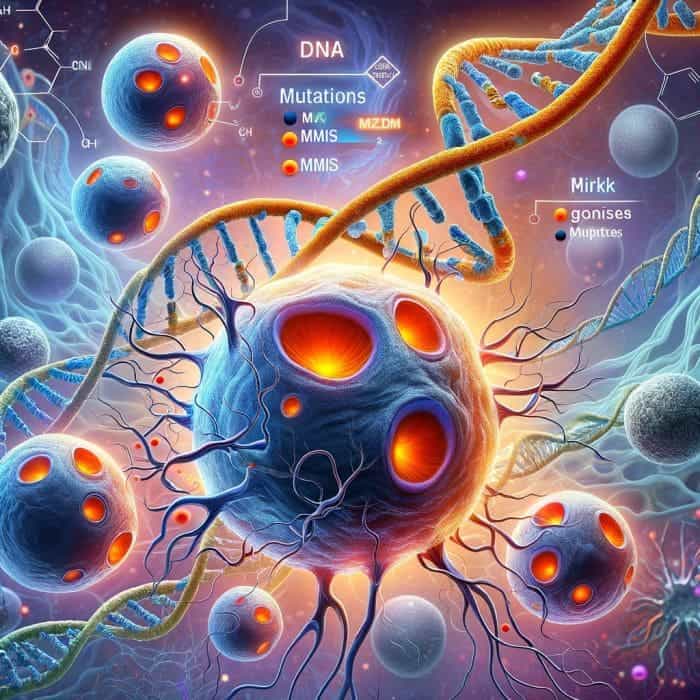
According to a study conducted by an international team of scientists under the direction of Sweden’s Karolinska Institutet, the involvement of oligodendrocytesWhat is oligodendrocytes?Tooltip Content, a type of cell in the central nervous system, in the onset of multiple sclerosis (MS) may differ from what was previously believed.
- This study found that oligodendrocytes and the associated progenitors have an open genome layout around immune genes and locations associated with MS risk in mouse and human brain tissues.
- This shows that the MS risk variants may play a more significant role in developing MS than previously believed by activating adjacent genes in oligodendrocytes and the associated progenitors.
- According to the research, oligodendrocytes and their precursor cells may also malfunction in addition to immune cells to increase the risk of multiple sclerosis.
The results suggest that these cells can also be addressed for therapeutic treatments to prevent potential MS dysfunction brought on by these mutations. The results may pave the way for a novel multiple sclerosis therapy strategy (MS).
6. A novel genetic research model derived from rapidly reproducing sea urchins (Japan, May 2022)
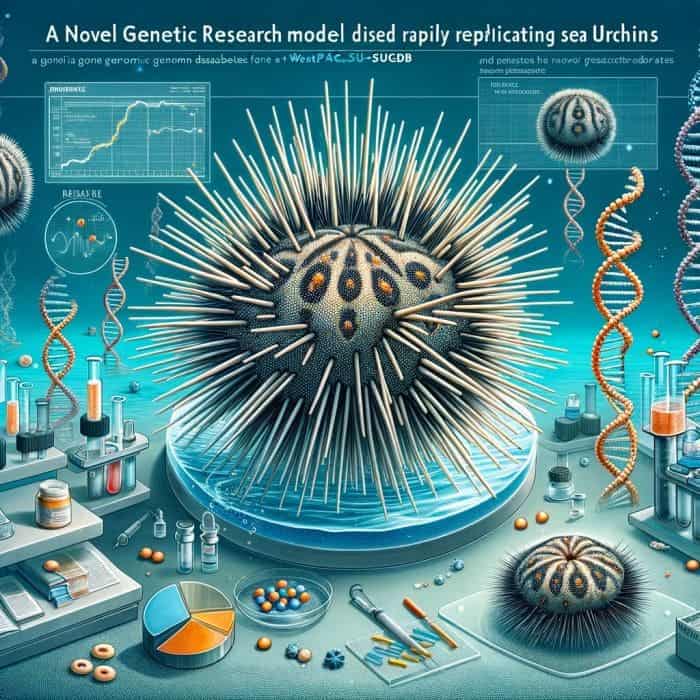
Sea urchins have been a model for figuring out how biological systems function for more than a century. The model species employed up to now may take two years to mature reproductively, rendering them ideal for genetic studies. It was necessary to locate species with quick breeding cycles to research genetics in sea urchins.
- Temnopleurus reevesii was chosen as a viable species by the researchers because it can create a new generation in just six months and have its eggs and sperm continually collected throughout the year if housed at a temperature of over 20°C.
- These characteristics make this species advantageous for laboratory culture because most other model sea urchins lack them.
- The team created two genome databases, TrBase and the Western Pacific Sea Urchin Genome Database (WestPac-SUGDB), which contain genomic data on T. reevesii and another model urchin species, Hemicentrotus pulcherrimus.
- They also assembled a draught genome for T. reevesii. These databases were made to provide genetic data and act as a portal for genetic information regarding West Pacific Sea urchins.
T. reevesii may now be used as a novel model species for study in various areas, including cell, experimental, developmental, and evolutionary biology, according to the findings of this study. The researchers also predict that future research will reveal a different kind of sea urchin as a more effective model organism for the biological sciences and medicine.
7. Researchers discover new genetic connections in juvenile NAFLD that influence both risk and severity (USA, June 2022)
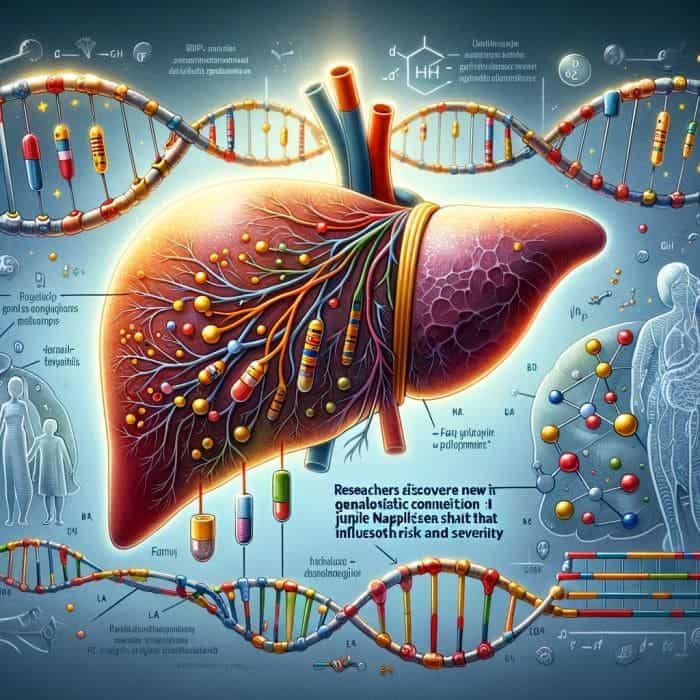
In two studies, researchers expanded their understanding of the genetic causes of nonalcoholic fatty liver disease in minors. They identified several gene variants that increase the risk of the condition.
- The goal of the new study, termed Genetics of Obesity Associated Liver Steatosis (GOALS), was to more thoroughly and comprehensively examine youngsters for pertinent single nucleotide polymorphisms (SNPs).
- In the first analysis of the genetic risk of NAFLD transmission, 252 family trios (mother, father, and child with biopsy-proven NAFLD) were examined.
- In the second, researchers looked at 822 kids with biopsy-proven NAFLD to explore the relationship between SNPs and the severity of the condition.
- The PARVB rs6006473 SNP was discovered by the researchers to have a new disease severity connection in children with NAFLD: liver fibrosis. The researchers were able to create a model that could aid in predicting the intensity of liver fibrosis in children minors with NAFLD by integrating this SNP data with that from other genes.
- Also, minors with borderline zone 1 NASH, a form of the illness often identified in children but not adults, had a highly enriched PNPLA3 SNP.
In pediatric NAFLD, where there are currently few therapy choices, these genetic connections may be crucial in developing future therapies.
8. Artificial Intelligence (AI) is used by researchers to identify a novel family of genes in gut flora (USA, July 2022)

In July 2022, scientists made a fascinating discovery in genetics using artificial intelligence (AI). They found a new group of genes in gut bacteria, focusing on their structure rather than their genetic sequence. Here’s the breakdown:
- New Gene Family Discovery: Researchers used AI to uncover a novel family of genes in gut bacteria. Unlike traditional methods that compare genes based on their sequence, they focused on the genes’ structure and function.
- Vibrio parahaemolyticus Study: They studied a complex of two proteins, VtrA and VtrC, in a bacterium called Vibrio parahaemolyticus, known for causing food poisoning from shellfish. This complex senses bile on the bacterial surface and triggers a reaction, making the bacteria invade human intestinal cells.
- Uncharted Territory: Previously, it wasn’t known if a counterpart to VtrC existed in this or other bacteria. A related protein, ToxR from Vibrio cholerae, had some structural similarities with VtrA.
- AlphaFold’s Role: The team used AlphaFold, an AI program, to predict protein structures based on genetic information. AlphaFold showed that a protein called ToxS in Vibrio cholerae is structurally similar to VtrC.
- Broader Implications: The researchers found similar structures (homologs) of VtrC in various disease-causing gut bacteria, like the ones responsible for the bubonic plague and melioidosis. These homologs seem to work with proteins like VtrA, suggesting they might have similar roles across different bacteria.
- Future Possibilities: Understanding these structural similarities could lead to new drugs targeting multiple infectious diseases that use similar methods to cause harm.
In a nutshell, it’s like discovering a universal pattern in the way some harmful bacteria operate, opening doors to potentially treat a variety of infections more effectively.
9. Recent studies provide information on the causes of birth abnormalities, 
infertility, and reproductive problems (USA, Mar 2022)
Researchers look at how chromosome behaviors and processes that control gene expression might affect conditions like cancer, birth abnormalities, miscarriage, and infertility.
- In the latest study, the researchers used sophisticated genetic mouse mutants and powerful tools for identifying genome-wide protein-RNA interactions to establish how the RNA helicase YTHDC2 binds RNA and regulates gene expression to control meiosis.
- The mitosis-to-meiosis switch is regulated by a pathway that includes YTHDC2 and its associated protein partners.
- To understand why these processes, go awry and result in reproductive problems, it is crucial to first understand the genetic and molecular pathways necessary for normal meiosis. Our work sheds light on these mechanisms.
Understanding meiosis is crucial for reproductive health since mistakes in meiosis can result in the loss of reproductive cells and infertility.
10. According to a recent study, taste-related genes may affect food preferences and, in turn, may have an impact on cardiometabolic health (USA, June 2022)
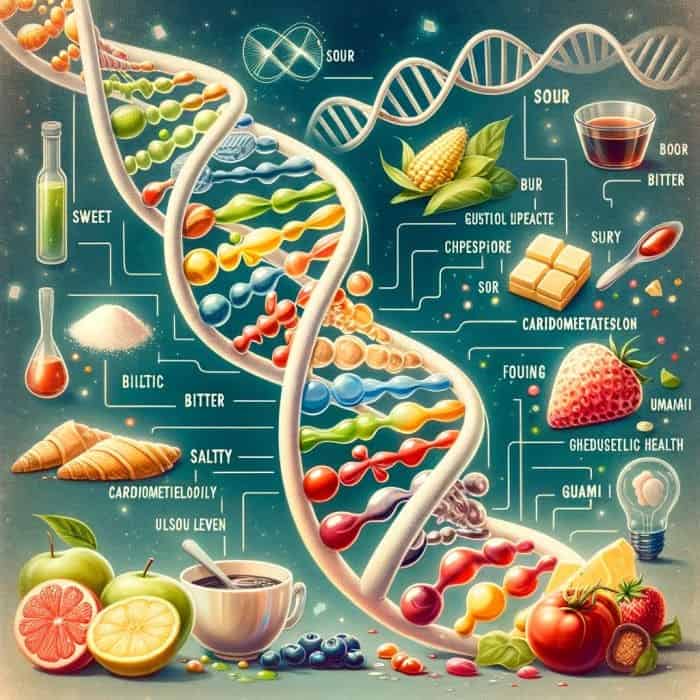
One of the key determinants of what we choose to eat and, consequently, the caliber of our diet is taste. It is also the first to examine the relationship between consuming certain food types and cardiometabolic risk factors and genetic variations responsible for taste perception.
- This study is distinctive because it analyzed all five fundamental tastes across a large population. In contrast, previous studies have only looked at genetic characteristics connected to particular preferences in specific groups of people.
- The researchers identified the genetic variations linked to each of the five fundamental preferences using information from earlier genome-wide association studies.
- With the help of this data, they created a brand-new scale defined as a “polygenic taste score” that gives a single estimate of the combined impact of numerous genetic variants on the perception of a particular taste.
- The researchers then examined 6,230 adults’ polygenic taste scores, food quality, and cardiometabolic risk factors. The risk factors included plasma triglyceride and HDL cholesterol concentrations, blood pressure, glucose, and waist circumference.
- The study found some links between taste-related genes, dietary categories, and cardiometabolic risk factors. According to the research, genes connected to sweet tastes appeared more significant to cardiometabolic health. In contrast, genes related to bitter and umami tastes may play a specific function in diet quality by affecting food choices.
It will be crucial to attempt to repeat these findings in various populations in the future to comprehend how to apply this knowledge to create individualized dietary recommendations.
11. After studying more than 5 million people’s DNA, Scientists discover how height and genetics are linked (UK, Oct 2022)

The data contained in our DNA primarily determines the adult height. Although these projections are generally accurate, children of tall parents tend to be taller, and those of short parents are likely to be shorter. This study closes a significant gap in our knowledge of how genetic factors contribute to height disparities.
- During this study, around 12,000 genetic variations have been found to affect a person’s height.
- The DNA of more than 5 million people from 281 participating studies was used in this, the largest genome-wide association analysis.
- The 12,111 variations are a potent genetic predictor of height because they are grouped around genome regions linked to skeletal growth.
- For people of European ancestry, the discovered variations account for 40% of the variation in height, and for people of non-European ancestry, 10–20%.
- The research, conducted at a never-before-seen scale, offers new levels of biological detail and understanding of why individuals are tall or short, with heredity being connected to distinct, precise genetic areas.
- The results demonstrate that areas comprising little over 20% of the genome contain most genetic variations linked to height.
The study’s results may assist physicians to identify patients who cannot grow to their genetically projected height, which may subsequently facilitate the identification of undiagnosed disorders or ailments that may be preventing them from growing normally or negatively affecting their health. The study also offers a useful framework for using genome-wide analyses to pinpoint a disease’s biology and, consequently, its genetic components.
12. The largest domestic cat DNA investigation has discovered disease-causing mutations in new breeds (USA, June 2022)
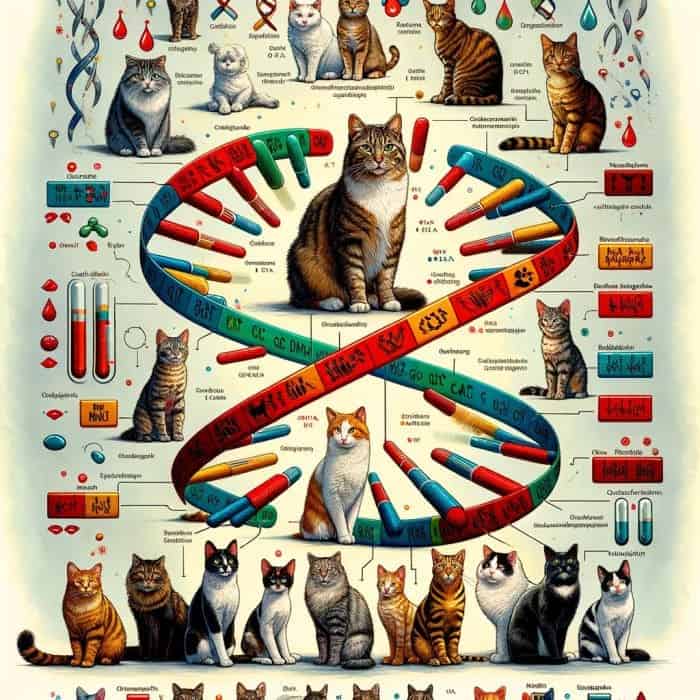
The findings of a DNA-based study of domestic cats reveal that there are more pedigree breeds than previously believed that carry 13 genetic variations linked to disease in cats. Yet, these variations are becoming less common in breeds that undergo routine genetic testing.
- About 11,000 domestic cats, comprising 617 non-pedigreed cats and 90 pedigreed breeds, were genotyped for 87 genetic variations linked to disease, blood type, or morphological characteristics.
- They discovered that the non-pedigreed cat population had higher genetic diversity than the pedigreed cat population and that three disease-associated variations were only present in non-pedigreed cats.
- They also found 13 variants associated with the disease in 47 breeds that had not been documented earlier. The findings, however, imply that the frequency of some markers has decreased since their discovery.
- For instance, none of the 118 Persian cats in this study had the PKD1 gene variation, which is linked to polycystic kidney disease and has been documented to affect 40% of Persian cats. Still, it was present in Maine Coons and Scotch Straights.
- The same feature in other breeds was caused by markers for specific coat colors and patterns.
Breeders’ decisions can be influenced by genetic testing for known disease variations and data on the genetic diversity of all breeds. In turn, these methods can aid in developing balanced breeding strategies that preserve genetic variety and steer clear of mating afflicted kittens.
13. Whole-genome sequencing gives fresh insights into deadly fungi (UK, Mar 2022)

A potentially fatal yeast infection called Candida glabrata, which impacts the urinary system, genitalia, mouth, and bloodstream, was recently the subject of the largest-ever whole-genome sequencing experiment, according to a study from the University of Exeter.
- In the most recent study, the genome of Candida glabrata was sequenced using samples from eight hospitals in Scotland. This resulted in a range of new facts about the species being found.
- This includes details about their reproductive habits and genetic diversity. Also, it was shown that drug-resistance genes frequently evolve within patients and that genes that increase the likelihood of infection have an advantage for survival.
- According to the study, this dangerous human fungal infection is being transported between continents, most likely by humans, and reconstituting to produce new populations, presumably leading to its high virulence and rising medication resistance.
Scientists now have a leg up in the fight against candida glabrata because of the information they’ve learned. Understanding the causes of resistance is essential to developing effective treatments because it has a strong resistance to some antifungal medications.
14. Zebrafish genetic atlas offers “breakthrough” in the biomedical research study (UK, July 2022)

Zebrafish are an exceedingly useful research model. They develop openly as embryos and have extraordinary regeneration abilities, making them excellent research subjects for several diseases and ailments.
- 27 laboratories from across the country collaborated as part of the DANIO-CODE partnership to classify open-access datasets that have been released and supplemented with additional data.
- 140,000 DNA regions that control the expression of genes in zebrafish were created as a result of the effort. With 1,802 samples and millions of data points apiece, the study on zebrafish—the second-most popular animal model for medical and life sciences research—offers the most comprehensive view of potential DNA areas for transgenic breeding and genetic studies on development and disorders.
- The resulting atlas/map is evidence of the impact that a bottom-up campaign for international collaboration can have on our research community.
Thanks to this new inventory, we are now one step closer to having a completely realized map that we can map with the human genome. This work will enable scientists worldwide to investigate novel cures and medications and better understand human and animal diseases.
15. A new study shows that genes may not be the most important factor in longevity (USA, Aug 2022)

A recent study examined how physical activity is associated with a lower risk of death. Higher light and moderate-to-vigorous exercise levels were linked to greater longevity, according to the prospective study.
- To estimate mortality until 2020, researchers started tracking the physical activities of 5,446 American women aged 63 and older.
- Participants were required to wear a research-grade accelerometer for seven days to track their movement patterns, level of physical activity, and amount of inactive time.
- According to a study, even if your genes indicate that you won’t live very long, you can still increase your longevity by adopting healthy lifestyle habits like frequent exercise and reducing your sitting time.
- In contrast, staying active is crucial to achieving longevity even if your genes favor you living a long life.
- According to the prospective study, higher levels of light exercise and moderate-to-vigorous exercise were linked to a lower chance of passing away.
- A higher risk of mortality was linked to longer inactive periods. These correlations persisted even among women with varying degrees of a propensity for long life.
The study’s findings corroborate suggestions that older individuals should engage in physical activities to lessen their risk of illness and early death, given the aging adult population and greater time spent doing lower-intensity activities.
Conclusion
This series of genetics news gives us a detailed overview of the recent developments in this field. Commencing with identification and predicting the genetic alterations in cancer genomes that are responsible for the disease, use of haplotype block for DNA sequencing in organisms, construction and use of genetic screens depending on sperm behavior will improve the quality of the DNA, discovery of genetic basis for neurodegenerative disorders and brain illness has been identified, the genetic approach can provide insight towards novel therapy, identification of various critical illness. Thus, the cure is possible through a genetic approach.
With these innovations, we move forward and expect more exciting news in 2023.
![]()




